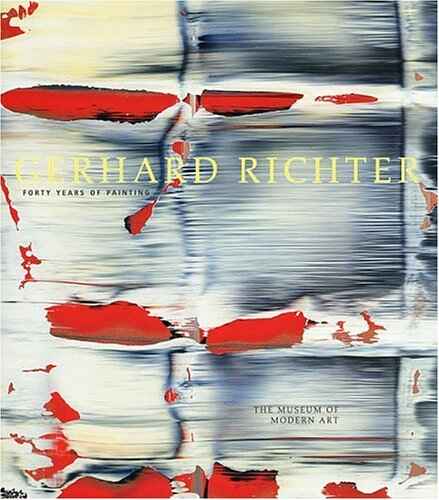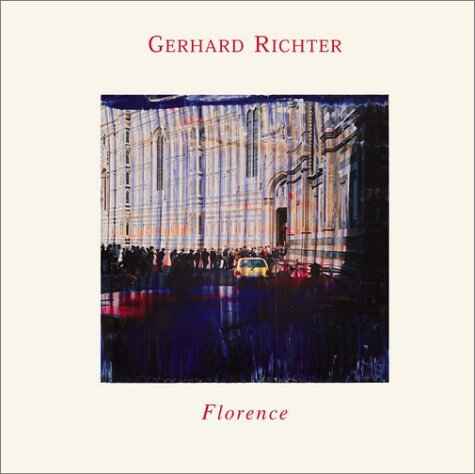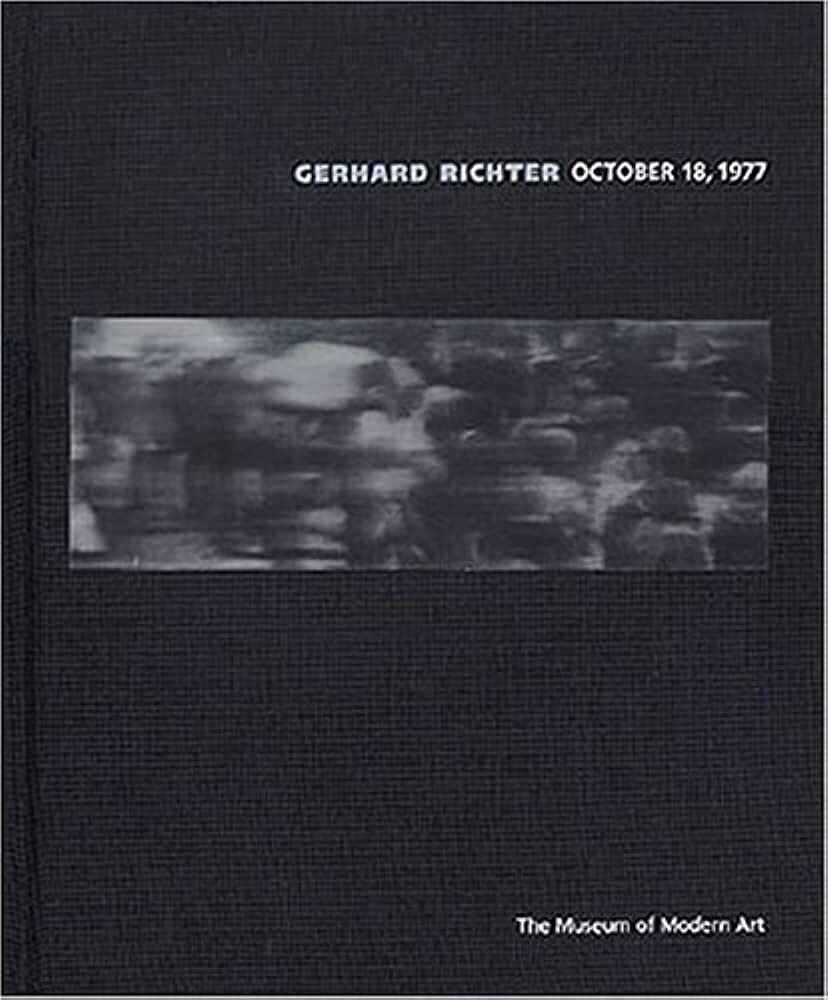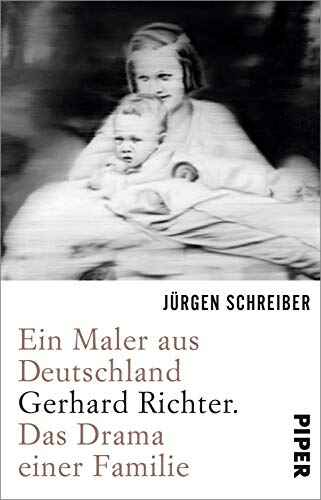
Gerhard Richter had his first New York appearance in May-June 1969 in the exhibition Nine Young Artists: Theodoron Awards at the Solomon R. Guggenheim Museum; he was the only German artist represented. The first overview of his work in the United States came in 1987, at the age of fifty-five. It consisted of only twenty-two paintings and was organized by John T. Paoletti for the Wadsworth Atheneum in Hartford, Connecticut. One year later followed a retrospective of eighty paintings organized by Roald Nasgaard (Chicago) and Michael Danoff (Toronto) which opened at the Art Gallery of Ontario in Toronto and traveled to the Museum of Contemporary Art in Chicago, the Hirshhorn Museum and Sculpture Garden in Washington, D.C., and the San Francisco Museum of Modern Art.
Since then, Gerhard Richter has become increasingly popular within the American art scene and market, but not with the larger American public which still ignores him. Organized by Lynne Cooke in 1995-96, New York’s Dia Center for the Arts presented the complete Atlas. In 2000, the Museum of Modern Art presented Richter’s cycle of canvases October 18, 1977, acquired by the MoMA in 1995, as part of the exhibition “Open Ends”. In 2000 followed the exhibition Gerhard Richter in Dallas Collections which, along a selection of paintings, included the artist’s complete set of multiples recently acquired by the Dallas Museum of Art.
Gerhard Richter: 40 Years of Painting at the Museum of Modern Art from February 14 to May 21, 2002 was more than overdue. Organized by Robert Storr, Senior Curator at the MoMA, who contributed the substantial 70-page catalogue essay on Richter, the retrospective with 180 paintings is the most comprehensive ever in North America. The MoMA presents Richter’s works from 1962 to the present – his early work, created in the GDR prior to 1962, being lost. Exhibits range from his clippings assembled for the Atlas to his photography-based pictures to abstract works. Richter’s artistic production includes performance, installation, sculpture, painting, drawing, watercolors, photographs, multiples and books. The retrospective concentrates on painting which has been Richter’s primary concern.
Gerhard Richter: Forty Years of Painting. Catalogue Museum of Modern Art, 2002, 336 pages. Order the catalogue from Amazon.com, Amazon.co.uk, Amazon.de, Amazon.fr.

For his (minor) drawings and his outstanding, still underrated watercolors, check our German review article of the exhibition in Winterthur, Switzerland, organized by Dieter Schwarz in 1999.
The catalogue by Gerhard Richter, Dieter Scharz: Gerhard Richter: Watercolors 1964-97. Richter Verlag, Kunstmuseum Winterthur, 2000, 156 pages. Order the book from Amazon.de, Amazon.com.
Dieter Schwarz, ed.: Gerhard Richter: Drawings 1964-99. Richter Verlag, Kunstmuseum Winterthur, 2000, 320 p. Order the book from Amazon.com, Amazon.de.
Forty Years of Painting — The Gerhard Richter retrospective
– at the Museum of Modern Art, MoMA, NYC: February 14 – May 21, 2002
– The Art Institute of Chicago: June 22 – September 15, 2002
– San Francisco Museum of Art: October 11, 2002 – January 14, 2002
– Hirshhorn Museum & Sculpture Garden, Washington, D.C.: February 20 – May 18, 2003


Gerhard Richter: Florence. Hatje Cantz, 2001. One of my favorite Gerhard Richter books with some of my favorite works by the German artist. Two different book covers. Find it at Amazon.com, Amazon.de.
Gerhard Richter was born in Dresden, Germany, in 1932. He grew up in the countryside, in Reichenau (1935) and Waltersdorf (1942) in Saxony’s Oberlausitz. His mother was the daughter of a concert pianist. She encouraged her son’s artistic interests. His father was a local school teacher and a member of the NSDAP who lost his job after the war (in which he had served). Gerhard lived his first thirteen years under National Socialism. Two of his uncles died in action, his mentally disabled aunt was killed a part of the Nazi euthanasia program.
After the war, Gerhard lived for sixteen years under East German Communism. In 1948, he left school after tenth grade with a certificate of graduation. He was apprenticed as an advertising and stage-set painter in the town of Zittau. In 1950, he applied to Dresden Art Academy but was rejected. In 1951, he painted political banners for state-owned businesses. In 1952, he reapplied for Dresden Art Academy and was accepted to the “free painting” class. He studied there for four years, during the final year in the mural painting class.
In 1955, Richter had the chance to tour West Germany and to travel for a week to Paris. The following year, he painted a mural at the German Hygiene Museum in Dresden as his graduation project upon which he became a master student and was given a studio at the academy for three years.
In 1957, Richter married Marianne Eufinger. They traveled to West Germany on their honeymoon. Two years later, Richter obtained the permission to visit the Documenta 2 exhibition at Kassel in West Germany where he discovered Abstract Expressionism and Art Informel.
In 1961, Richter traveled to Moscow and Leningrad. On his return trip, the train stopped unexpectedly in West Berlin where he deposited his luggage. Back in Dresden, he asked a friend to drive him and his wife to East Berlin from where they traveled by subway to West Berlin, pretending to be day-trippers. The Berlin Wall was built in August 1961.
Richter moved to Düsseldorf where he was accepted into the class of Ferdinand Macketanz at Düsseldorf Art Academy (Kunstakademie) where Joseph Beuys was a young professor (in 1971 they became colleagues). Richter studied for two years with Karl Otto Götz. At the academy, he met artists like Konrad Lueg (later Konrad Fischer), Sigmar Polke and Blinky Palermo. Richter was influenced by Jean Dubuffet, Alberto Giacometti, Jean Fautrier and the anarchic Fluxus movement, a resurgence of Dada. Richter painted works intitled Wound and Scar and began a photo album of his early work.
In September 1962, Richter’s first exhibition in West Germany was organized at Galerie Junge Kunst in Fulda. The catalogue listed thirty-seven paintings, all dated 1962, most of which were destroyed by the artist later that year. Richter also showed forty-nine drawings. Still in 1962, Richter abandoned Art Informel and painted his first photo-based paintings, using a projector.
In 1963, Richter and Lueg traveled to Paris where they saw Yves Klein‘s work — the artist had died the year before at the age of thiry-four — at Galérie Iris Clert and introduced themselves to art dealer Ileana Sonnabend as German Pop artists. Richter was part of an exhibition in Düsseldorf, partly labeled Capitalist Realism, a term which showed up again later. Richter never intended it to be a political movement despite its allusion to Socialist Realism and its aesthetic dogmas. Capitalist Realism can be interpreted as a satirical term and a substitute for the label Pop.
In 1964, Richter had his first solo-exhibition, Gerhard Richter, at Galerie Schmela in Düsseldorf. The following year, he created his first multiple, Hund [Dog], in an edition of eight. In 1966, he began to work on Color Charts, exhibited the same year at Galerie Friedrich and Dahlem in Munich. It was also the year of birth of his daughter Babette. In March, Richter and Polke exhibited together at Galerie h in Hannover, which was by the way the first major presentation of Polke’s work.
In 1967, Gerhard Richter became a visiting professor at the Hochschule für bildende Künste in Hamburg and was awarded the art prize “Junger Westen” by the German city of Recklinghausen. The same year, he created Gray paintings. In 1968, Richter painted townscapes, landscapes and Shadow paintings.
In 1969 Richter reviewed material collected throughout the 1960s and began to assemble pieces for Atlas, an ongoing compilation of photographs, clippings and sketches. He published the multiple Bilderverzeichnis and, in May-June, had his first New York appearance in the exhibition Nine Young Artists: Theodoron Awards at the Solomon R. Guggenheim Museum.
In 1970, Richter and Palermo traveled to New York. Gerhard made Seascapes, Clouds and Gray paintings. In Cologne, he was one of some seventy artists represented in the exhibition Now: Today’s Arts in Germany [Jetzt: Künste in Deutschland heute] at Kunsthalle Köln.
There were too many exhibitions from 1970 to the present to be listed here; for details, check the MoMA exhibition catalogue. The early 1970s where a time in which he painted monochromes that evoked mainstream minimalism, but had a different intent and feeling.
In 1971, Richter became tenured professor at Düsseldorf Art Academy. In 1973, he had his first one-person exhibition in New York at Reinhard Onnasch Gallery. In 1977, he began to paint watercolors; these are related to his Abstract Pictures. The same year, he withdrew his paintings from the opening exhibition Documenta 6 at Kassel on the opening day because of last-minute rearrangements of the painting section. In 1978, Richter taught for one semester as visiting professor at the Nova Scotia College of Art and Design in Halifax.
In 1983, Richter moved from Düsseldorf to Cologne. The following year, he began to work again in watercolors, which he had stopped in 1978. Still in 1984, he had his first exhibition of watercolors at Galerie Thomas Borgmann in Cologne. Since the late 1980s, his work has oscillated between photo-based pictures and abstractions.
In 1987, a selection of Richter’s notes was published for the first time on the occasion of an exhibition in Amsterdam. In 1993, his writings were published in German as Gerhard Richter: Texte, edited by Hans-Ulrich Obrist. The English version followed in 1995. In 1996, Richter moved to a new home and studio and his daughter Ella Maria was born. At the Venice Biennale in 1997, Gerhard Richter was awarded the Golden Lion.
Richter is by many considered a “conceptual painter” whose “paintings are statements about ideas for paintings”. Richter himself said that he wanted to express “the inadequacy in relation to what is expected of painting” through his art, the inadequacy of the making of images and the critical examination of it. He is considered a master of “deconstruction” of formal conventions of painting. He kept a “skeptical distance from vanguardists and conservatives alike regarding what painting should be”. According to Storr, all of Richter’s works point toward “the basic loss of bearings”; he is “an image-struck poet of alertness and restraint, of doubt and daring”. Whatever your interpretation of Gerhard Richter’s oeuvre may be, he is a major contemporary artist.

Gerhard Richter: October 18, 1977 — 18. Oktober 1977. Hatje Cantz, 2001, 216 pages. Order the book from Amazon.com, Amazon.de, Amazon.co.uk. This is an excellent book about Richter and the cycle of fifteen black-and-white paintings regarding the 1970s RAF terrorists and their suicides in the prison of Stammheim. Painted by Richter in 1988, the series was bought by the MoMA seven years later. It is one of Richter’s best works, and one of the rare substantial political art works of post-war Germany.

[New in German, added in October 2005: Jürgen Schreiber: Ein Maler aus Deutschland. Gerhard Richter. Das Drama einer Familie. Pendo-Verlag, Oktober 2005, 302 S. Get the biography (in German) of the world’s most expensive living artist from Amazon.de].
Article originally added on April 17, 2002. Added again to our newly designed pages on March 27, 2023 at 17:08 German time.